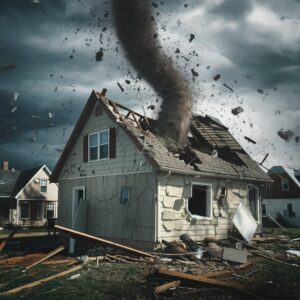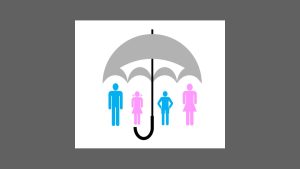Natural Disaster Coverage with Home Catastrophe Insurance
Home Catastrophe Insurance Covers Natural Disasters
If you’ve seen a catastrophe movie, you know how devastating volcanic eruptions and earthquakes can be.
But isn’t the entertainment industry exaggerating these disasters? While Hollywood certainly goes to extremes. Natural catastrophes cost the US an average of $80.7 billion per year, which may surprise you (via NOAA).
Every house has a plan in place in case of catastrophic events, such as increasing floodwaters or earthquakes that could shake the foundation.
Even if your homeowner’s insurance covers various things, it does not cover all known disasters. Special disaster insurance coverage is essential to reduce the cost of repairs.
Additional coverage from catastrophic insurance can shield you and your property from calamities like hurricanes, floods, earthquakes, tornadoes, volcanoes, and sinkholes.
On the other hand, some homeowners purchase additional fire insurance to secure their houses and belongings further.
Individual supplemental insurance policies are available for various disasters; some are even required by law in your area.

What exactly constitutes disaster insurance?
If your house or possessions are damaged in an accident caused by a natural disaster such as a flood, hurricane, earthquake, tornado, volcano, or sinkhole, you could seek further protection through catastrophic insurance.
It also guards against manufactured disasters such as civil unrest, terrorist attacks, and explosives. To be adequately protected, many of these calamities are not covered by conventional homeowners insurance policies and must be covered by a specific policy add-on.
What exactly constitutes private disaster insurance?
Purchasing a private umbrella or disaster insurance has nothing to do with specific disasters, although it does provide additional liability protection for various situations.
It is an add-on to your home or auto insurance that covers medical expenses if you or your family injure someone.
What is the process of obtaining catastrophic insurance?
Standard homeowner’s insurance plans do not cover many calamities, so you may need additional insurance to get the protection you need.
Catastrophic insurance refers to various additional insurance plans that complement your homeowner’s policy, such as the types of storms covered and the coverage for all covered disasters. Individual supplemental insurance is available for a range of disasters, including:
Earthquake
Floods
Hurricanes
Landslides
Mudslides
Riots
Landslides
Terrorism
Tsunamis
Vandalism
Fires in the forest
Naturally, some of the situations above happen far more often than others.
Consider yourself lucky if you happen to call a high-risk location home. Here, it’s possible that getting a separate catastrophic insurance policy is even mandated by your state government to improve catastrophe preparedness. It is common practice to have supplemental insurance in high-risk locations, such as coastal areas, tornado zones, and earthquake belts.
How do I keep my home secure from natural disasters?
Aside from full coverage insurance, you can take a few more precautions to protect your property against significant storms. All homes should adhere to these standards, which cover everything from routine maintenance to replacing damaged roof tiles to reduce the impact of even a little storm.
Bring any yard equipment or outdoor furniture that may be blown indoors by a strong wind.
Check for cracks or leaks in weatherstripping and repair as necessary to keep water out.
Rain gutters should be cleaned at least once a year to allow rainwater to drain correctly.
Maintain your home regularly to prevent wear and tear.
Appliances can be protected from floods by being elevated a few inches.
Replace damaged or loose roof shingles to strengthen your property’s storm protection.
All outdoor structures, including carports, porches, and sheds, should be secured to the ground or foundation.
Overhanging branches should be clipped yearly to keep them from falling on your home during a storm.
Get more recent garage door models that are wind-resistant.
Keep these tasks on your to-do list throughout the year, not just during hurricane and tornado season. Because homeowners insurance plans frequently reward proactive mitigation measures, upgrading your home to guard better and protect yourself from storms can save money.
While you shouldn’t expect a Hollywood-style tsunami to hit your neighbourhood anytime soon, an insurance consultant can provide valuable advice on disaster safety for your property.
References
Catastrophe Insurance: Meaning, Types, Who Needs It: https://www.investopedia.com/terms/c/catastrophe-insurance.asp

